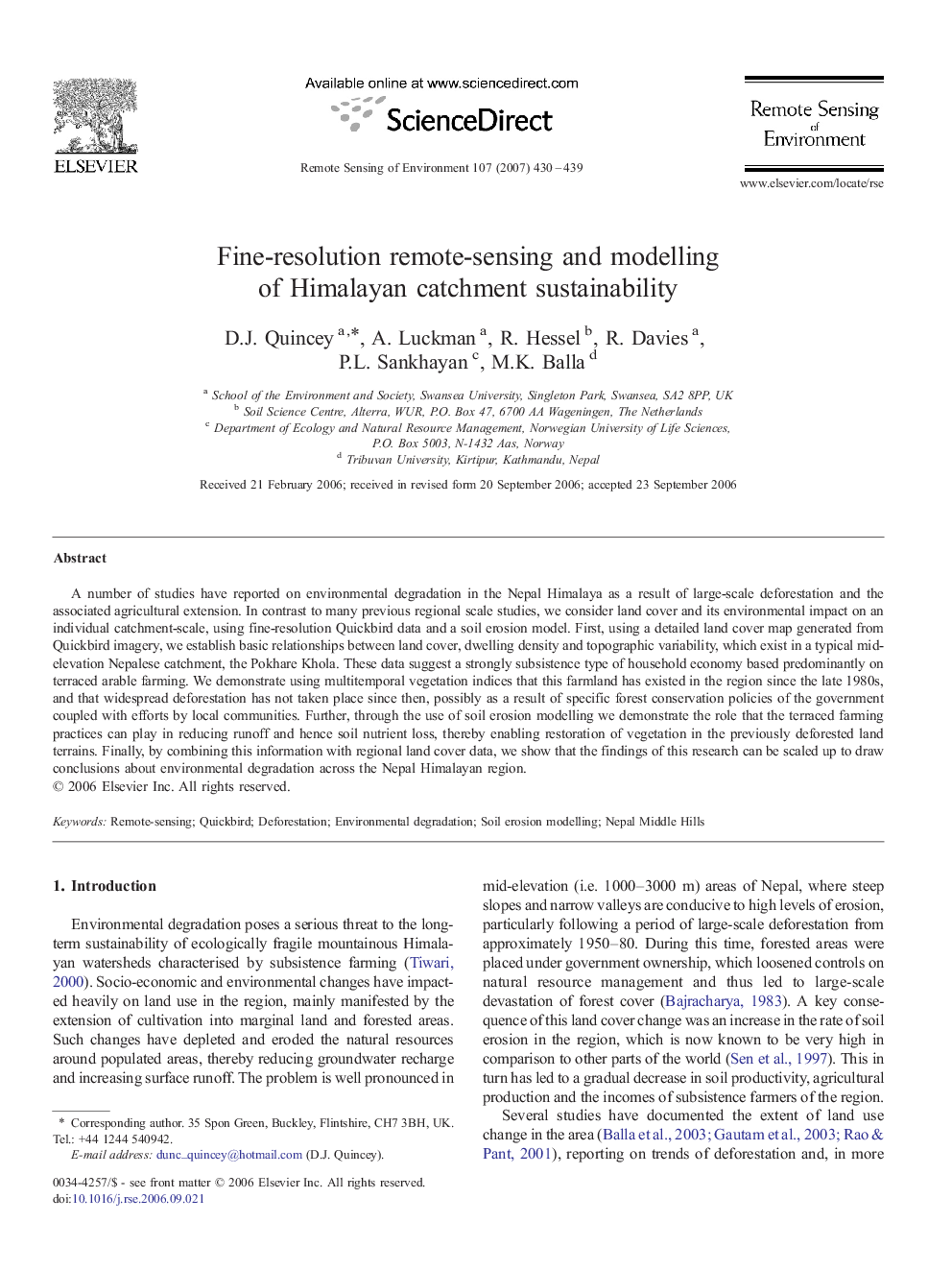| Article ID | Journal | Published Year | Pages | File Type |
|---|---|---|---|---|
| 4460838 | Remote Sensing of Environment | 2007 | 10 Pages |
Abstract
A number of studies have reported on environmental degradation in the Nepal Himalaya as a result of large-scale deforestation and the associated agricultural extension. In contrast to many previous regional scale studies, we consider land cover and its environmental impact on an individual catchment-scale, using fine-resolution Quickbird data and a soil erosion model. First, using a detailed land cover map generated from Quickbird imagery, we establish basic relationships between land cover, dwelling density and topographic variability, which exist in a typical mid-elevation Nepalese catchment, the Pokhare Khola. These data suggest a strongly subsistence type of household economy based predominantly on terraced arable farming. We demonstrate using multitemporal vegetation indices that this farmland has existed in the region since the late 1980s, and that widespread deforestation has not taken place since then, possibly as a result of specific forest conservation policies of the government coupled with efforts by local communities. Further, through the use of soil erosion modelling we demonstrate the role that the terraced farming practices can play in reducing runoff and hence soil nutrient loss, thereby enabling restoration of vegetation in the previously deforested land terrains. Finally, by combining this information with regional land cover data, we show that the findings of this research can be scaled up to draw conclusions about environmental degradation across the Nepal Himalayan region.
Related Topics
Physical Sciences and Engineering
Earth and Planetary Sciences
Computers in Earth Sciences
Authors
D.J. Quincey, A. Luckman, R. Hessel, R. Davies, P.L. Sankhayan, M.K. Balla,
